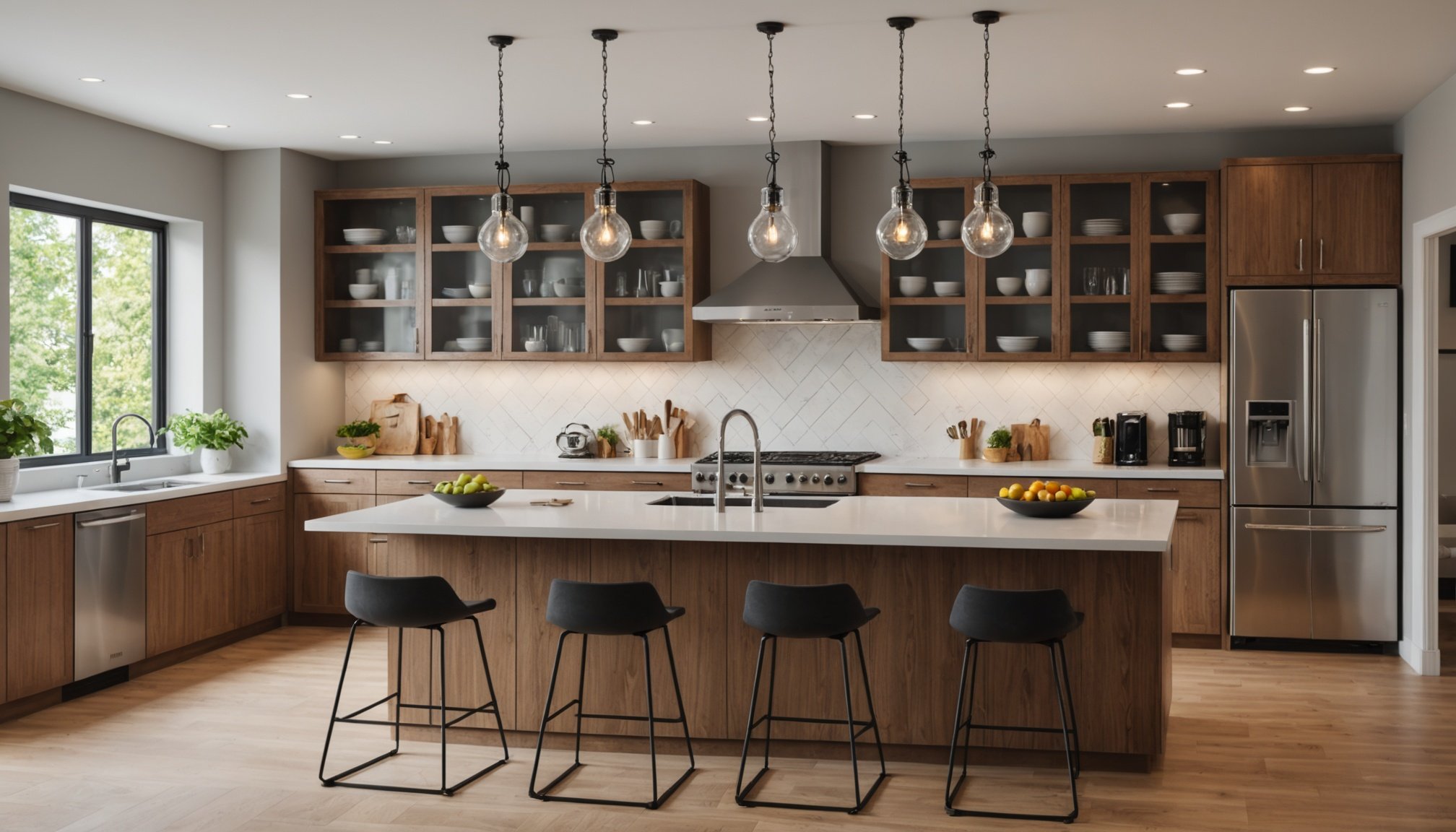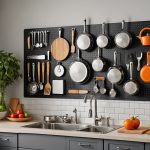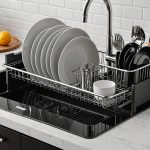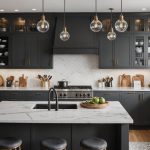Understanding the Role of Acoustic Panels in Kitchen Design
Acoustic panels are an ingenious solution in kitchen design when it comes to addressing sound issues. Typically made from sound-absorbing materials, these panels are designed to reduce noise by dampening echoes and reverberations within a room. Their role transcends mere aesthetics, as they are instrumental in transforming chaotic kitchens into serene environments conducive to both cooking and dining.
In a bustling kitchen, the importance of noise reduction cannot be overstated. Clattering pots, whirring blenders, and clangs of cutlery are just a few contributors to the cacophony that disrupts the peace. By incorporating acoustic panels, one can significantly mitigate these sounds, preserving the kitchen as a calming sanctuary.
Additional reading : Revolutionizing british cuisine: how programmable air fryers transform low-fat cooking for a healthier you
A thoughtfully designed kitchen with acoustic panels does more than muffle ambient noise. It improves the overall cooking and dining experience by making conversations more enjoyable and background noise less intrusive. This allows for a more intimate, pleasant atmosphere, whether preparing a meal or entertaining guests. Thus, acoustic panels are not merely functional but are crucial elements in modern kitchen design, enhancing the aura of a homely and peaceful setting.
Benefits of Smart Acoustic Panel Placement
Strategically placing acoustic panels in the kitchen can significantly alter the sound dynamics, creating a more peaceful environment. With a smart design, these panels help dampen unwanted echoes and reverberations, allowing for clearer conversations and a calming atmosphere. Proper acoustic panel placement can make the heart of the home more enjoyable to spend time in, while also offering practical benefits.
Also read : Revamp your kitchen: maximize storage and inspire healthy cooking with an innovative pegboard system
Reducing noise through considered acoustic panel placement provides psychological advantages by lowering stress levels. Kitchens can often be bustling hubs with multiple activities happening simultaneously, leading to overwhelming noise. By incorporating smart design principles into acoustic panel placement, stress relief becomes a pleasant byproduct, fostering a more relaxed and enjoyable cooking and dining experience.
Additionally, noise management through effective acoustic panel placement can extend beyond stress relief to influence healthier eating habits. The connection between sound and eating is intriguing: noisy environments can lead to hurried meals and distracted eating. When the kitchen is transformed into a more serene space through smart design, individuals may find themselves more mindful of their eating practices, taking time to focus on meals and make healthier choices.
Overall, the kitchen benefits from thoughtful acoustic panel placement, as it integrates calmness which harmonizes the space with daily living activities.
Practical Tips for Effective Panel Placement
When trying to optimise the acoustics in your kitchen, correct panel placement is crucial. It’s important not only for sound management but also for maintaining an aesthetically pleasing environment.
Ideal Locations for Acoustic Panels
In any kitchen, finding the right spot for your acoustic panels is key. Often, the best locations are on walls and ceilings that face the main source of noise. This strategically reduces sound reflection and improves overall kitchen acoustics. Kitchens with open layouts might benefit from positioning panels where the sound is most likely to bounce back, such as on corners and adjacent to cooking spaces.
Panel Materials and Their Impact
Different materials offer varying benefits when it comes to sound absorption. Fibreglass, foam, and fabric-covered panels are popular choices for their efficiency in reducing echo and noise. Foam panels are generally more accessible and cost-effective but slightly less effective compared to fibreglass. Fabric-covered options can be customised, adding both function and style to your space.
Calculating the Quantity of Panels Needed
To determine the correct number of panels, measure your kitchen’s size and remember that room dimensions impact acoustics. For an average-sized kitchen, covering at least 20-30% of the wall and ceiling surface areas can significantly improve sound management. Adjust based on your room’s unique requirements and desired level of sound absorption.
Case Studies and Examples
Real-life applications of acoustic panels demonstrate their effectiveness in transforming spaces, especially in kitchen transformations. Homeowners often express their delight in testimonials, noting the remarkable difference these acoustic improvements have made. One homeowner mentioned how the panels in their open-plan kitchen reduced noise significantly, creating a more pleasant and quieter environment.
Consider the scenario of a bustling family kitchen where noise was a constant companion. Before the installation of acoustic panel examples, conversations were drowned out by clattering dishes and the hum of appliances. After installing the panels, the sound quality improved noticeably.
In professional kitchen designs, acoustic paneling is not merely an aesthetic choice but a necessity. Chefs in high-end restaurant kitchens have praised them for reducing echoes, which allows for clearer communication among staff. Such kitchen transformations not only enhance functionality but also contribute to a more serene cooking atmosphere.
Another real-life application involves a case study where an echo-prone dining area was transformed into a tranquil space through strategic placement of acoustic panels. The panels effectively absorbed the excess noise, earning glowing testimonials from diners who now enjoy a more intimate dining experience.
These examples illustrate how acoustic panels can improve a space’s auditory environment, proving beneficial in both residential and commercial settings.
Further Reading and Resources
For those interested in enhancing their understanding of acoustic panels in kitchen design, several resources can provide deeper insights. Whether you are exploring ways to improve your home’s sound quality or seeking expert guidance, begin here.
Many kitchen design resources offer comprehensive guides to implementing acoustic panel products effectively. These resources not only cover installation procedures but also delve into the aesthetics and functional benefits of these panels. Designed to reduce unwanted noise, acoustic panels are becoming staples in modern homes, enhancing both function and style.
To ensure the best results, consider consulting expert insights available online. Websites like the Architectural Digest, for example, frequently publish articles and recommendations from professionals in acoustics and interior design. Consulting such expert opinions can provide clarity and assurance in your home improvement journey.
Additionally, for those seeking kitchen design resources, you may want to explore dedicated books and articles that focus on acoustic design aspects specifically tailored to kitchens. These resources often include practical advice on selecting and fitting acoustic panel products, ensuring that each panel serves both aesthetic and acoustic functions efficiently.
By subscribing to newsletters or forums focused on home improvement and interior design, you might gain continuous access to updated information and expert insights. Stay informed about the latest trends and innovations that could benefit your kitchen’s acoustics and overall ambiance.



















